 |
WWII Uniforms / Flight Gear Ed Nored Collection |
Personnel
Mission Reports
photos copyright ©2006-2018 by Ed Nored, used by permission
Flight Gear 1944-1945 / F-3 Heated Suit
Parachutes 1943-1945
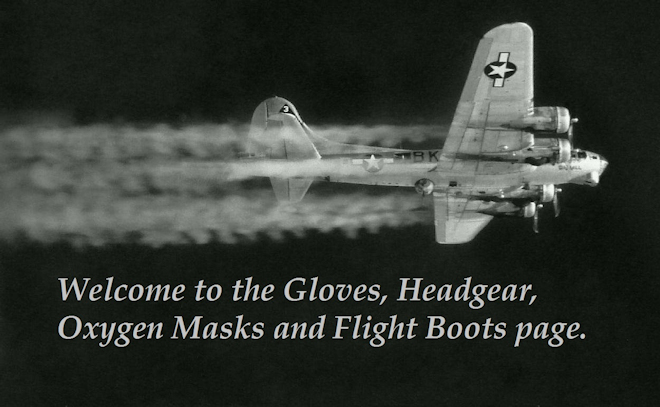

(5-1) Above are two examples of navigator cases. The hats in top row left to right are the B-1, the short billed HBT cap and the B-2 leather with shearling cap. Next row L-R the A-3 mechanics cap, overseas cap and the officers crusher cap. All hats except the leather B-2 can be seen in the Middlemas Crew of the 360th. The B-2 can be seen on all of the 5 men kneeling in Lead Crew Mission #191.
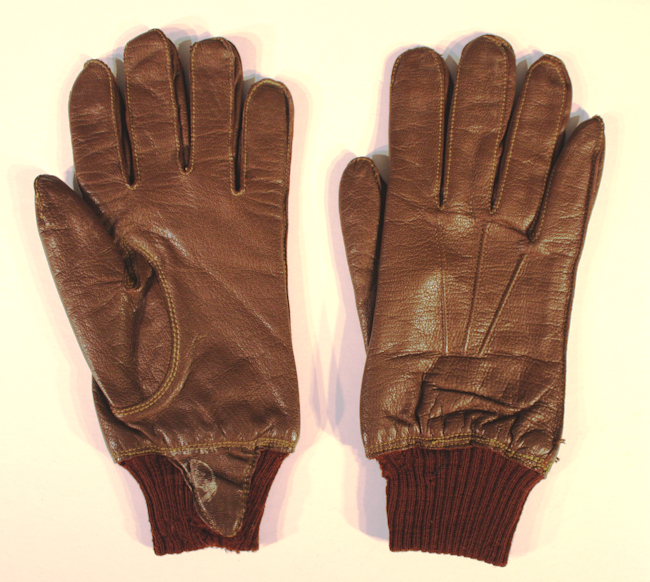
(5-2) Shown above is the A-10 glove.
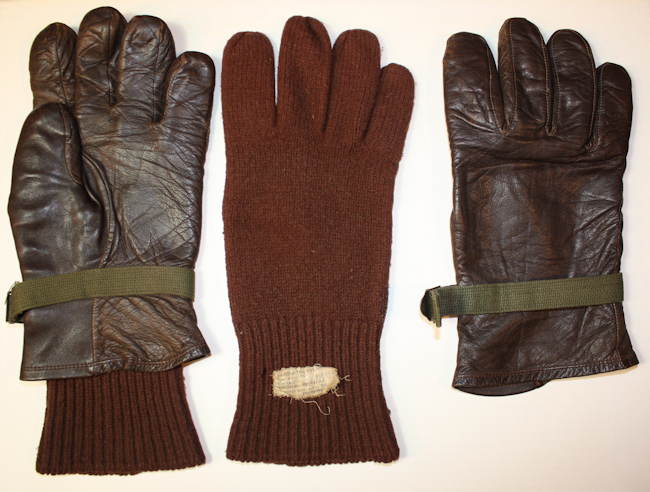
(5-xx) Shown above and below is the A-11 glove with matching original wool inserts. Matching labels state each was made by the Crocetta Bros. & Co. Inc.Below is Schaffer's crew from the 398th BG. You can clearly see two of the men kneeling who are wearing the A-11 glove. Both men are wearing B-10 jackets with white collars and noted is one man with double buckle boots..

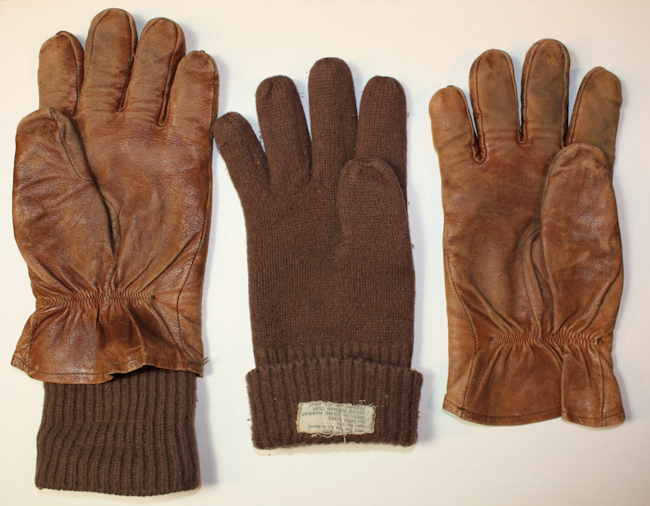
(5-xx) Shown above is a pair of well used A-11A gloves. The difference from the A-11 is they have removed the green wrist strap and replaced it with an elastic strap. Like the A-11 gloves, a label is sewn on to the wool glove and matching information is stamped on the interior of the outer glove. Both pieces of the glove shown are matching and was made by the BACKMO POSTMAN CORP.
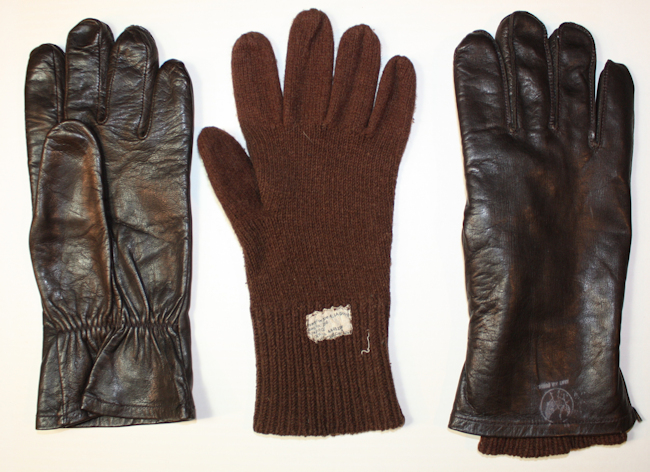
(5-xx) Shown above is another example of the A-11A glove. This all matching pair was made by the Fownes Brothers & Co. Stamped on each glove is the AAF logo.
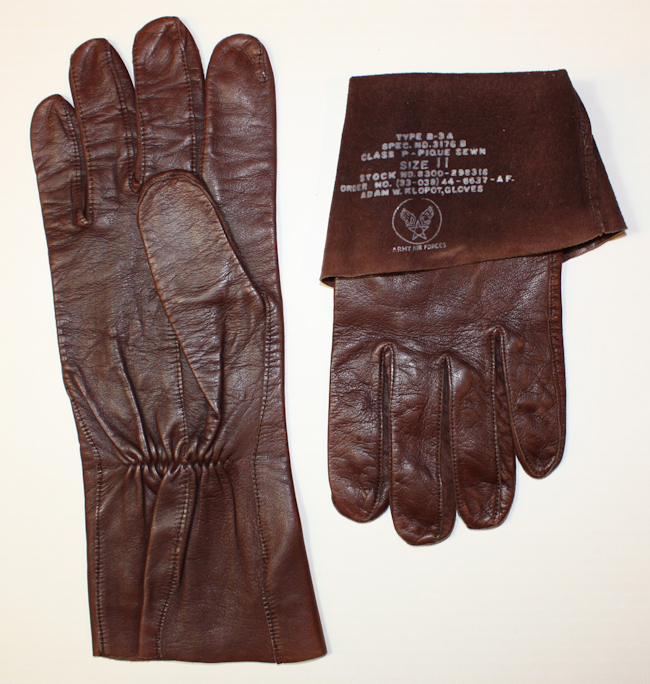
(5-xx) B-3 vvvvvvvvvv vvvvvv
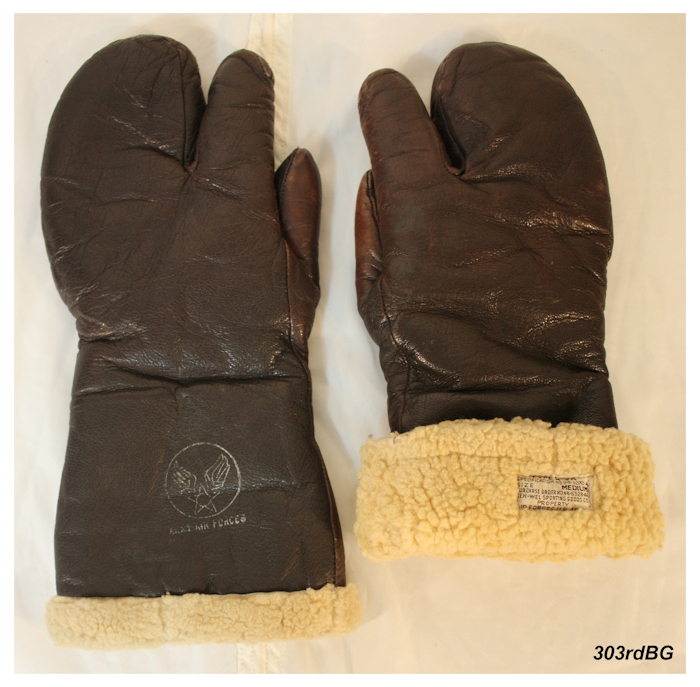
(5-xx) vvvvvv vvvvv
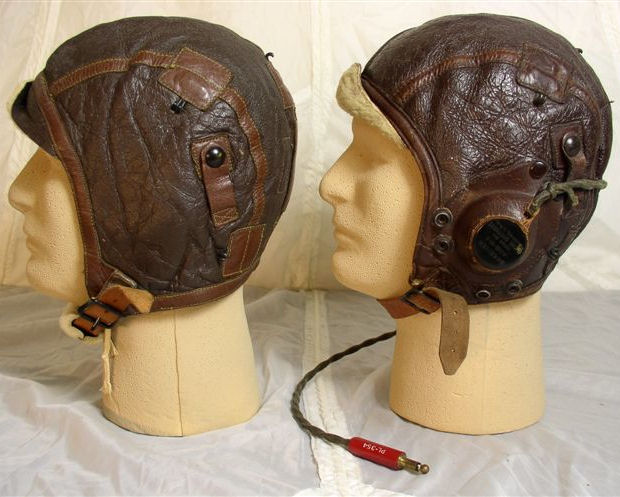
(5-3) Above are two examples of the B-6 helmet. The one on the left is how most B-6 helmets were issued. At some point earcups were added to hold the receivers. Snaps also had to be added to fasten the oxygen mask.
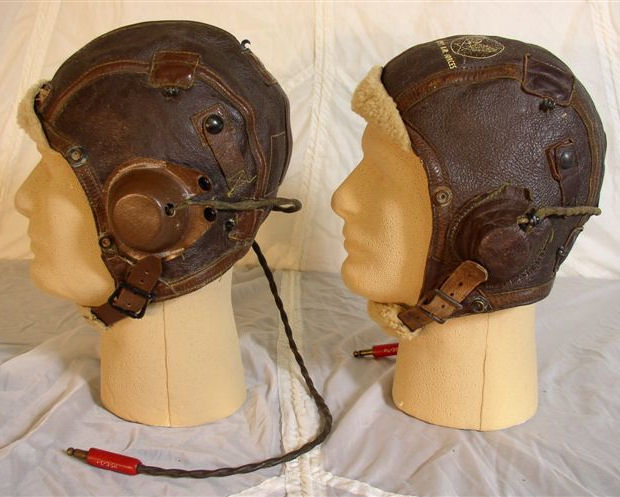
(5-4) Here are two more examples of the B-6, each shown with 2 different types of receiver cups. There is a third method of mounting the receivers to the helmet. The same large rubber ear pads used on the headsets were also sewn onto the A-9 helmet (not shown) and the B-6. Examples of the B-6 helmet with rubber ear pads sewn on can be seen on Lead Crew Mission #65.

(5-5) These helmets are the same ones shown previous, with a better shot of the left helmet's leather name tag and the AAF decal applied to the one on the right.
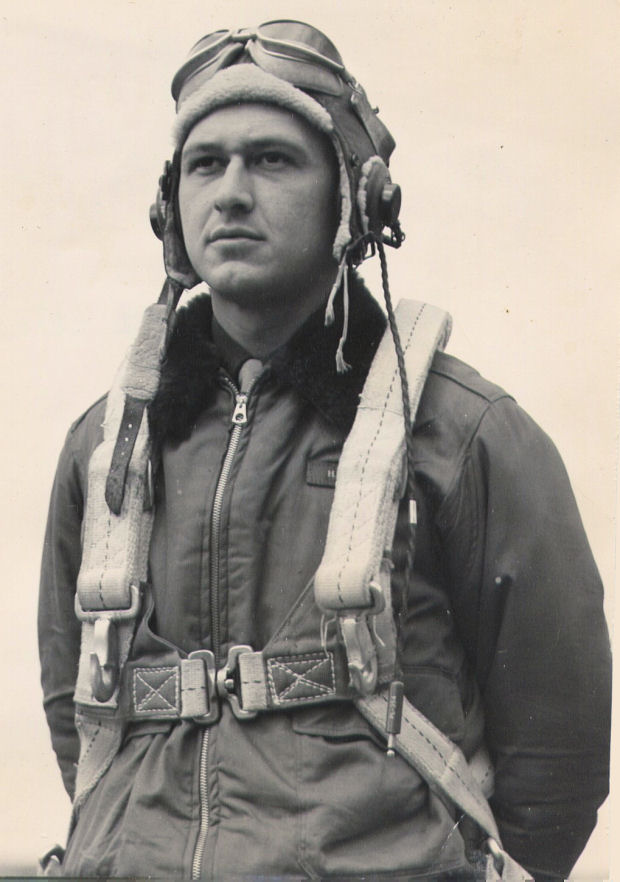
(5-6) Shown above is a typical 8th AF crewman. This man wears the B-6 helmet withrubber cups attached to hold the receivers. His B-10 has no AAF symbol applied to the shoulder. His A-3 harness looks brand new. The goggles are either the B-7 or AN6530 type.
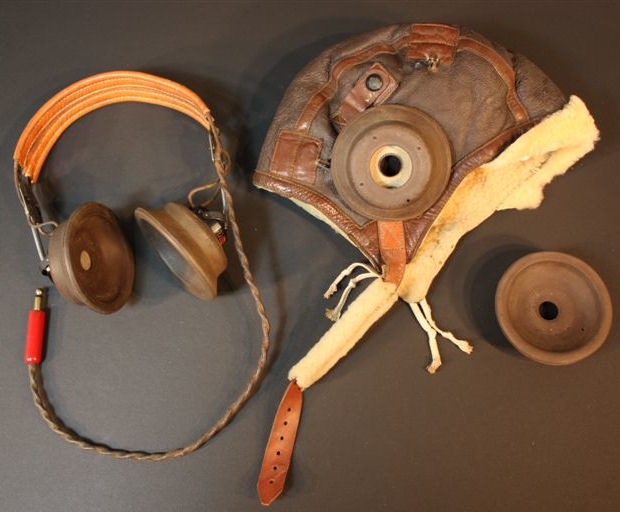
(5-8) Shown above is the headset HS-38. This headset is found with two types of ear cups or cushions. They will either have the small black cushions or the larger type, brown in color, shown above. The ones shown above were also sewn onto the B-6 helmet (shown above) and the A-9 helmets to hold the receivers. Refer to above photo (5-6) to see them sewn onto the outside of the B-6.
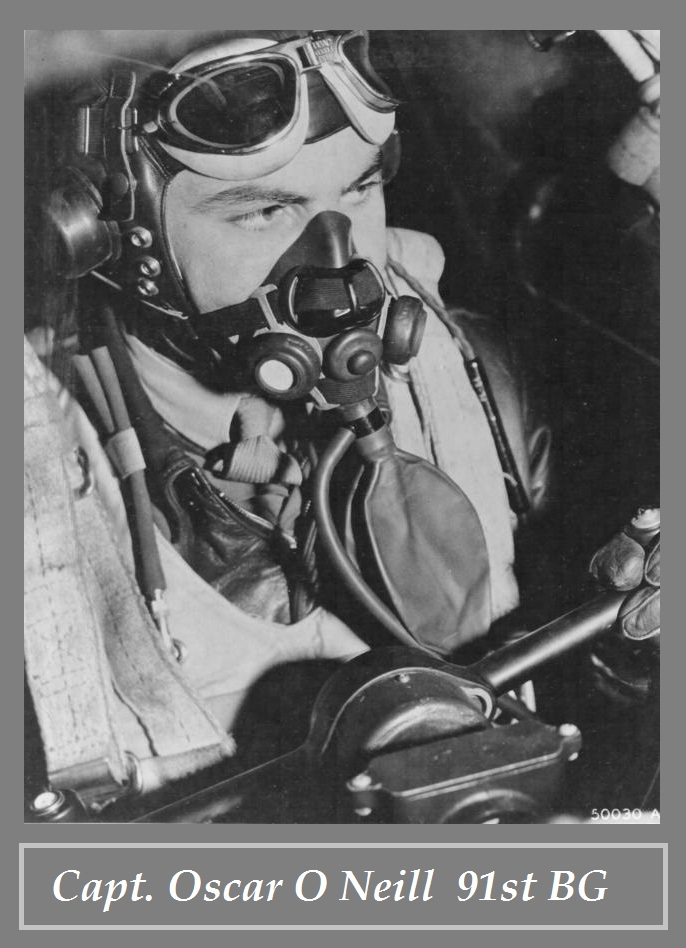 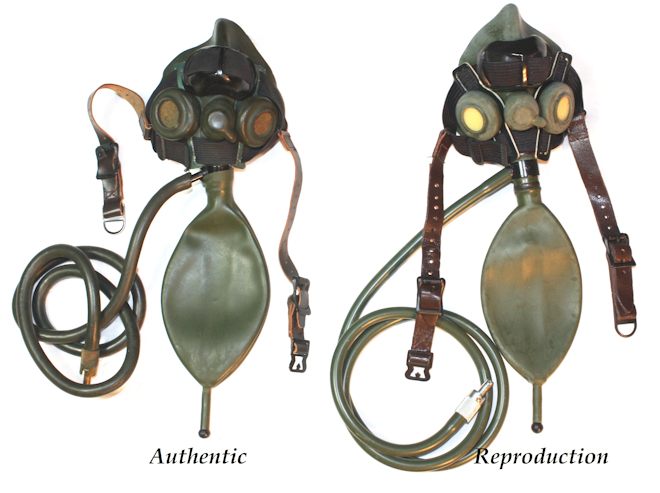 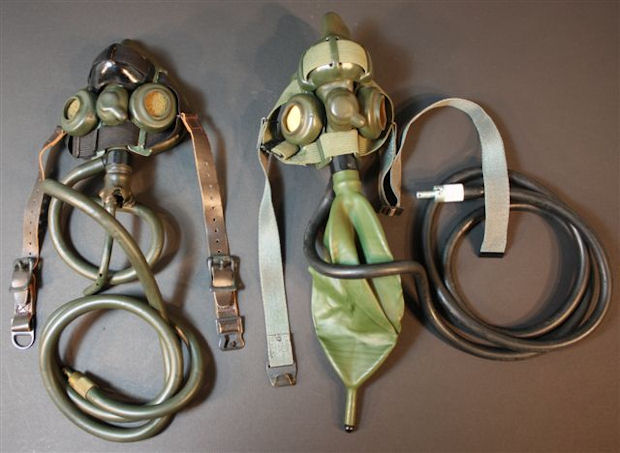 Shown above on the left is the early wartime A-8B oxygen mask with the post war version on the right. |
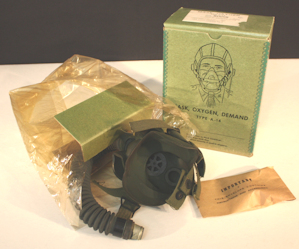
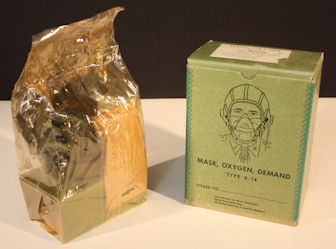
(5-xx) Shown in the three photos above and below is the A-14 oxygen mask, used by fighter and bomber crews from early 1944 until the end of the war. You'll need to install a ANB-MC-1 microphone. Or if your doing a typical 8th or 9th AF fighter pilot, the T-44 Microphone with Bell Plug to accommodate British radios would be appropriate. In the sample shown above I have included the photos of the mask still in the cellophane wrapping. You would expect the mask to be in mint condition, but it isn't. I have drawn a white square around the section where the rubber has turned hard and unflexible. Bad storage or just the passing of time has taken its toll. I wanted to warn collectors it may be better and cheaper to purchase a used mask that is still soft and flexible with no box (about $150) or take a chance on one in the cellophane with box ($200-250).
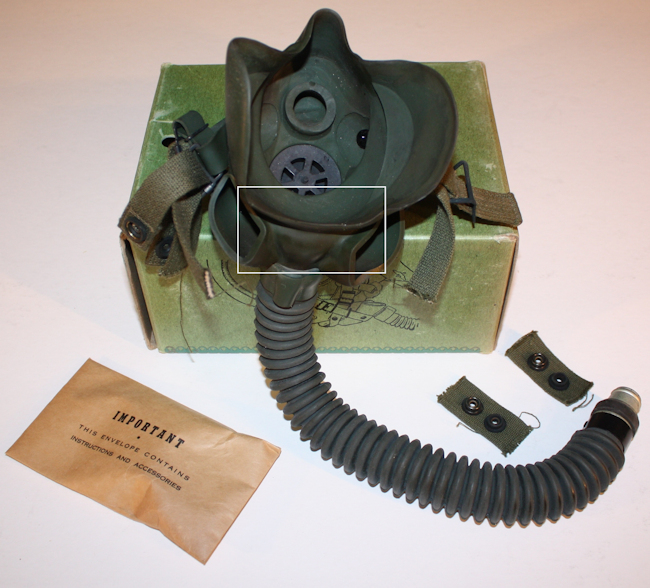


(5-xx) Shown above is the A-9 helmet. Ear cups for the receivers have been sewn on. The goggles are the type 1021. The oxygen mask is the A-9 "short". Spec. no. 3125 dated 1-42. Its use peaked in 1943.
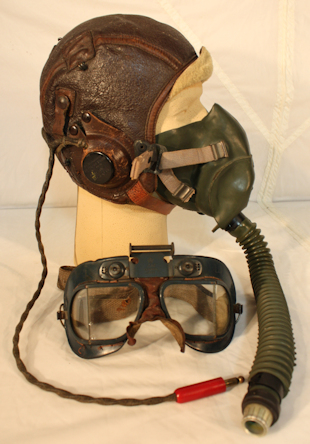
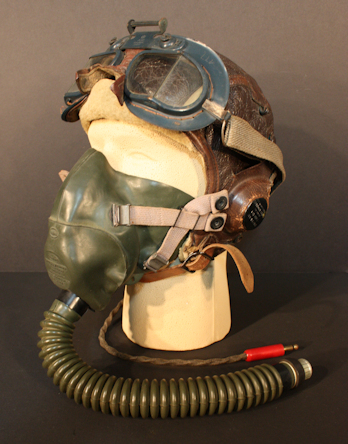
(5-xx) Shown above is the A-10A spec. # 3134 oxygen mask. The goggles are the RAF MK VII. There's quite a few crew members shown wearing these goggles in 1943. See lead crew # 21. Many still had the flip shields attached. The use of both peaked in 1943. The use of the B-6 marches on into 1944.
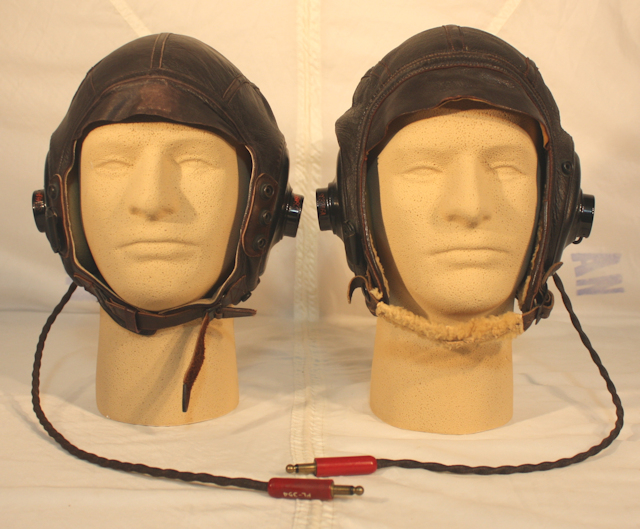 Shown above and below: On the left is the A-11 helmet. On the right is the more rare AN-H-16. Because they are so similar the two helmets can be easily confused or hard to identify in photos. The best example photo I came across here at the 303rd site is the 360th Christian Crew (Max A Christian). Two of the crew are wearing the AN-H-16 helmet. The other man wears a RAF C type helmet. Note the differences in the helmet. The interior shot below shows the shearling interior. The small "brow" bill was either shearling or chamois leather (shown). I would issue this warning to beginning collectors who obtain the B-6 helmet or AN-H-16 helmet. If it has snaps for the O2 masks I would urge you not to snap your O2 mask to it. The snaps will eventually pull out of the helmet.  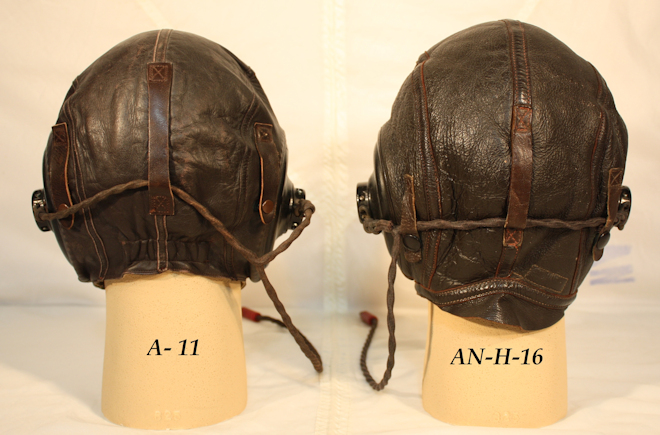 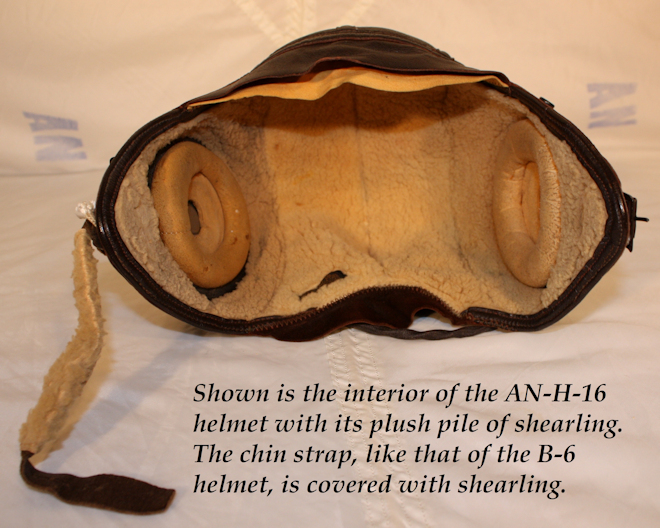 |
 Shown above and below. On the left is the RAF 1942 Type C helmet. Very popular with American fighter pilots and it is not uncommon to see them on some of the AAF bomber crews. On the right is the RAF type D helmet used in the milder climates by fighter pilots. I've never seen a photo of one being worn by an AAF bomber crew man. My example is a reproduction made by SEFTON CLOTHING CO. OF COLCHESTER, ESSEX, England. He made several helmets for Red Tails. Beautiful work. Both the helmets shown have authentic ANB-H-1 receivers. Often you will see that tape has been applied to the ear cups to hold the receivers in. 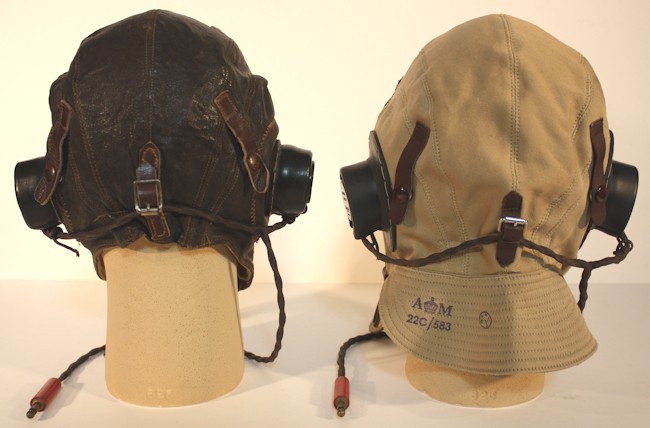 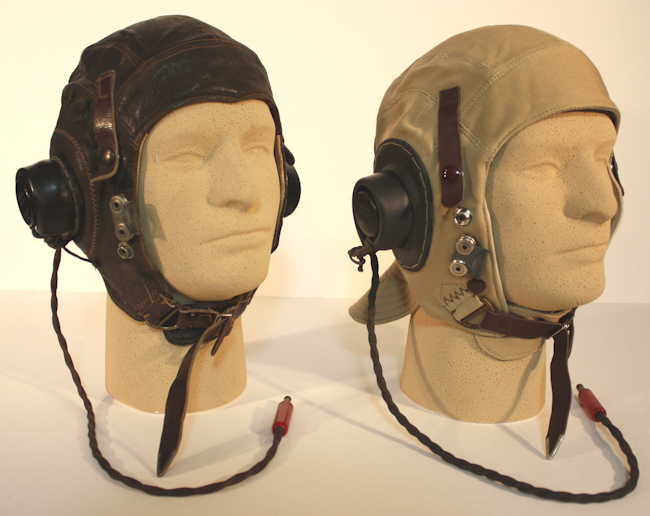 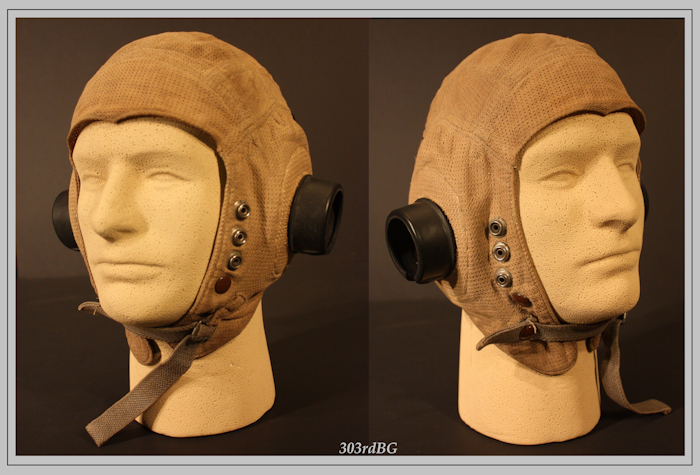 Shown above is the hard to find RAF type E flight helmet, very similar to the RAF type C "family" of helmets. It is constructed of a loose open weave for use in hot climates. |
  
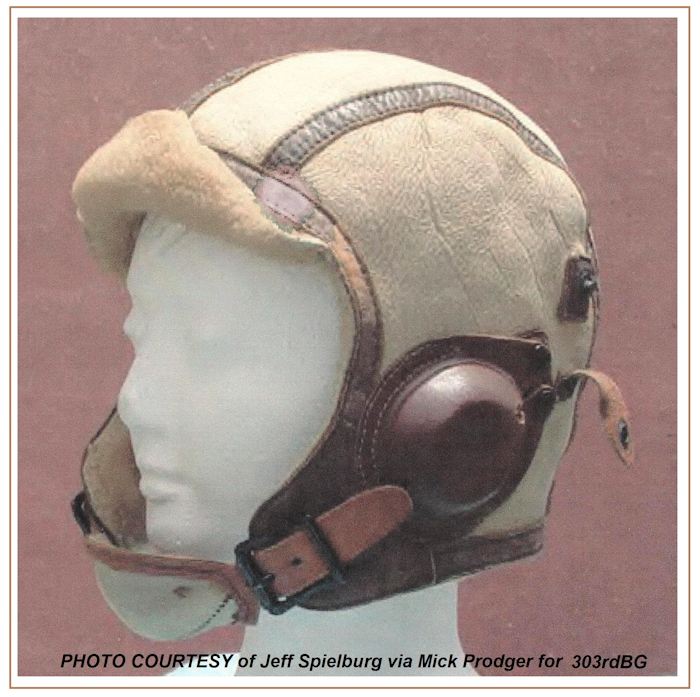
In the Lead Crew photo for Mission #33, T/Sgt Charles Zipfel is wearing the early B-5 helmet. |
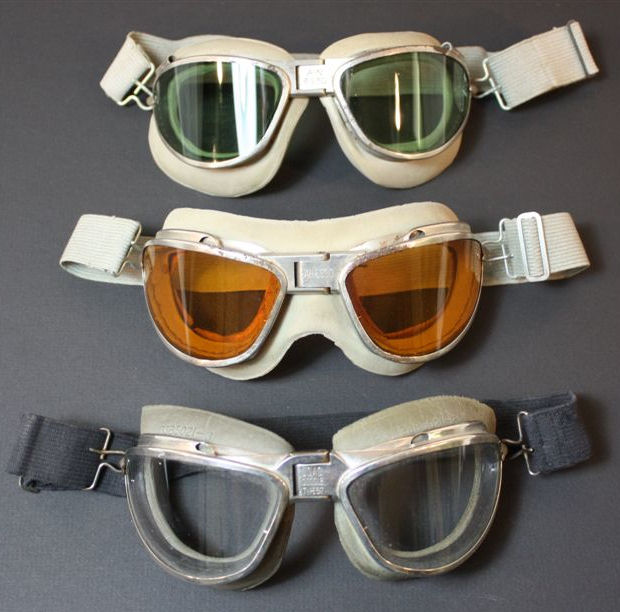
(5-10) On top are the AN-6530 goggles with green lenses and single pads. Center is another pair of 6530's with amber lenses and equipped with the most commonly found single piece eye pad or cushion. (They make excellent reproduction pads now that look identical.) The bottom goggle is the USAC Goggle Type B-7. This is the much more sought after goggle since it was issued in the Air Corp days and before the 6530's. The head straps are found in white, gray or black
 (5-xx) vvvvvvvvv vvvvvv 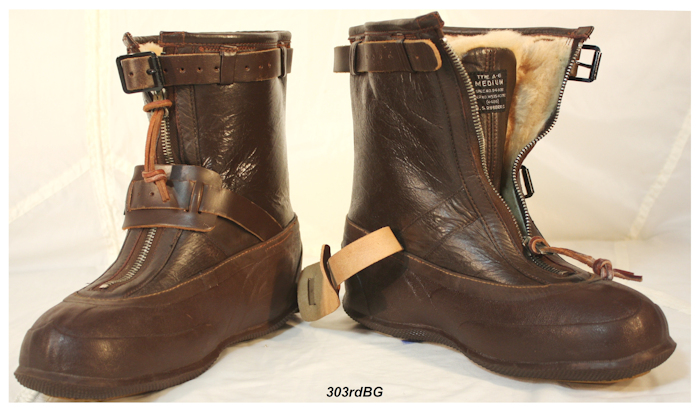 (5-12) vvvvvvvvvv vvvvvvvvvv 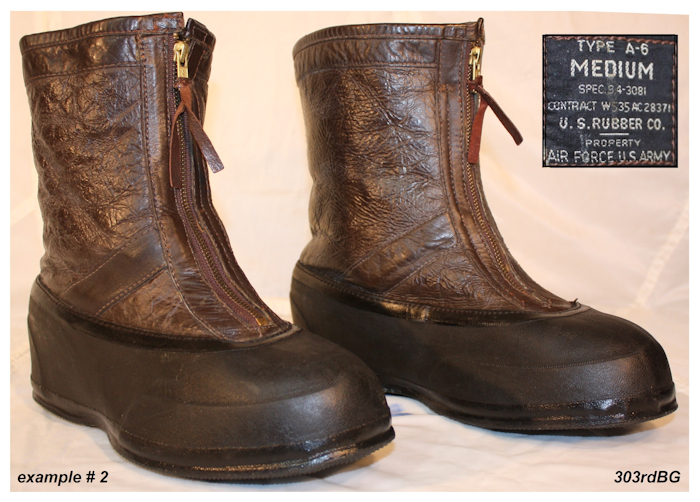 (5-13) vvvvvvvvvvvvv vvvvvvvvv  (5-XX) vvvvvvvvvv vvvvvvvvv 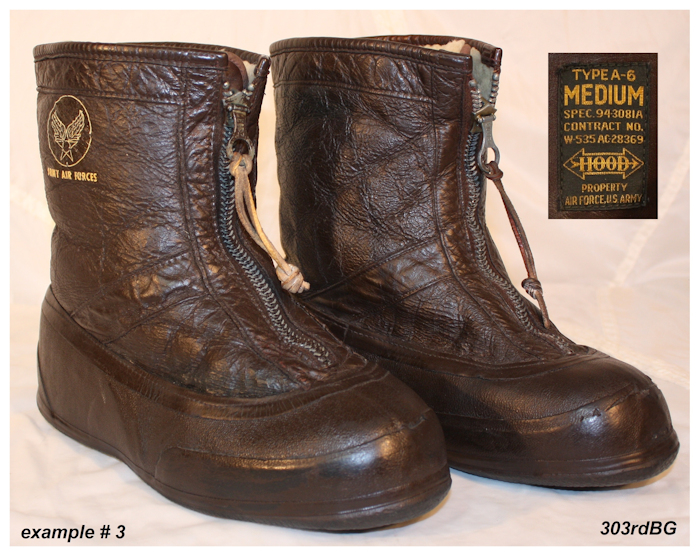 (5-XX) vvvvvvvvvv vvvvvvvvv 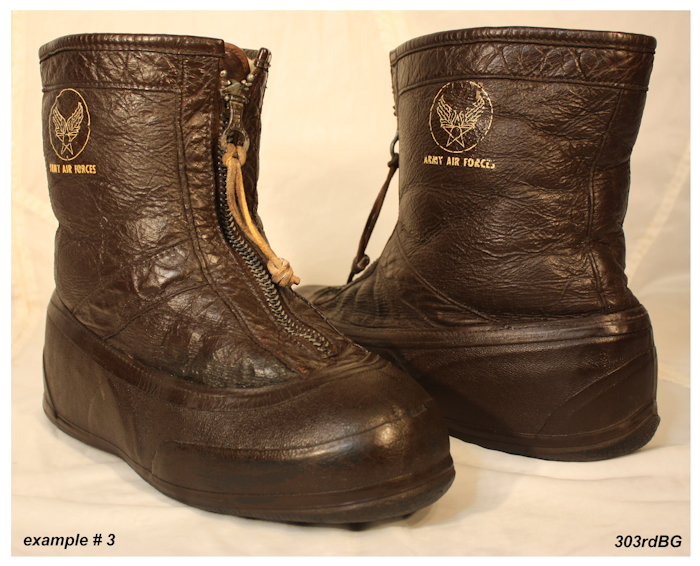 (5-XX) vvvvvvvvvv vvvvvvvvv  (5-XX) vvvvvvvvvv vvvvvvvvv  (5-XX) vvvvvvvvvv vvvvvvvvv |

Above is an original WWII Safety Poster reminding pilots in training of the many mistakes new pilots make. All of the posters are 17 X 22 inches in size.
| The uniforms and gear presented here are from the private collection of Ed Nored. Any reproduction or other use of these copyrighted photographs is strictly forbidden. 303rdBG.com was granted exclusive rights to these photographs solely for historical purposes. The items shown are not for sale. |